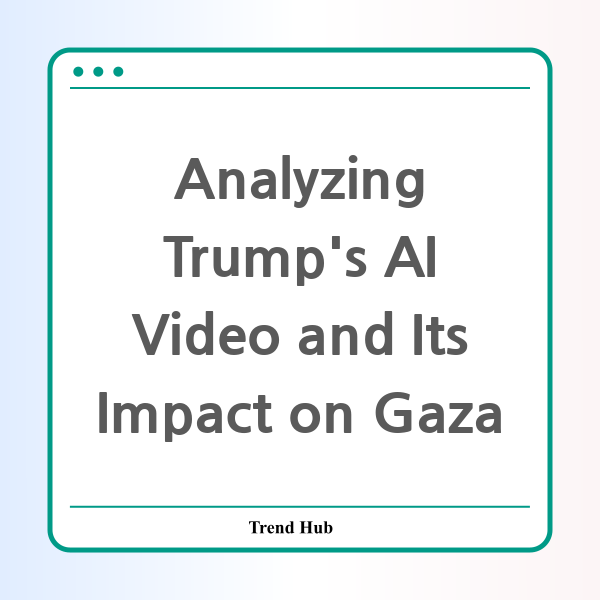* This website participates in the Amazon Affiliate Program and earns from qualifying purchases.

Is AI Changing Political Communication Forever?
In recent days, a peculiar video has surfaced on social media, grabbing the attention of both supporters and critics alike. This AI-generated video, which features former President Donald Trump alongside Israeli Prime Minister Benjamin Netanyahu, showcases a vision of a transformed Gaza – dubbed the "TRUMP GAZA" – that has triggered outrage among various communities, particularly among Arabs and Muslims.
The video presents a surreal utopia where scenes of destruction are transformed into what appears to be a luxurious resort, complete with children playing, palm trees, and a towering statue of Trump. This bizarre imagery raises the question: What does it reveal about the evolving landscape of political communication in the digital age?
While many have dismissed the video as a farce, others are taking it seriously as a representation of Trump's controversial plans for Gaza. In light of recent comments made by Trump suggesting the U.S. should take control of the Gaza Strip and relocate Palestinians, it’s not surprising that the video has sparked a fierce backlash. Critics argue that such depictions trivialize the ongoing humanitarian crisis in Gaza and undermine serious discussions about peace and rebuilding.
Faye Nemer, CEO of the MENA American Chamber of Commerce, labeled the video as "offensive and counterproductive to peace talks." This sentiment resonates with many who feel that the realities faced by Palestinians are far too complex to be captured in an AI-generated fantasy. One resident from Gaza, Mohamed Abdelrahman, succinctly expressed this frustration when he stated, "We won’t be lured by a few statues and money, leave us alone and let us rebuild our homes by ourselves."
Interestingly, the White House has positioned Trump's video as part of a broader vision for Gaza's future. According to spokesperson Anna Kelly, the administration envisions a humanitarian effort involving the U.S. in the region's rebuilding, portraying Trump as a "visionary" for his proposals. This political framing is indicative of a larger trend where AI and digital media are being utilized as tools for narrative-building in political discourse.
This video isn't just a casual social media post; it marks the dawn of a new genre of political communication driven by AI. As we witness AI-generated content becoming increasingly common, the question looms: How will this shape public perception and political narratives? The surreal nature of the video—featuring men in drag, a dancing Elon Musk, and an overall carnival-like atmosphere—serves as a stark contrast to the grave reality many experience in Gaza.
Undoubtedly, the intersection of AI technology and political messaging presents both exciting potential and deep ethical dilemmas. As leaders harness these tools to craft narratives, it becomes essential for audiences to critically evaluate the content they consume and the implications it carries. The surreal and, at times, satirical nature of AI-generated videos could easily cloud the gravitas of real-world issues and present a distorted view of reality.
In conclusion, Trump's AI video serves as a microcosm of the challenges posed by the melding of technology and politics. As political landscapes continue to evolve, understanding the implications of these digital narratives will be crucial. Are we witnessing the birth of a new era in political communication or merely a strange blip on the radar? Time will reveal the lasting impact of these innovations as we navigate the complexities of modern governance.
* This website participates in the Amazon Affiliate Program and earns from qualifying purchases.